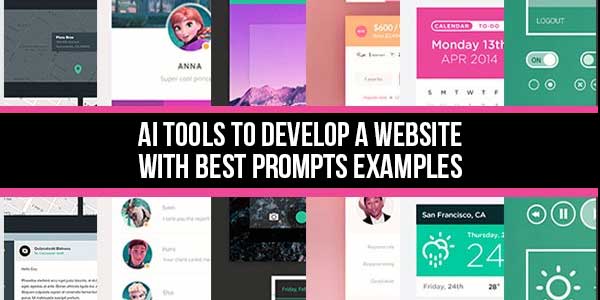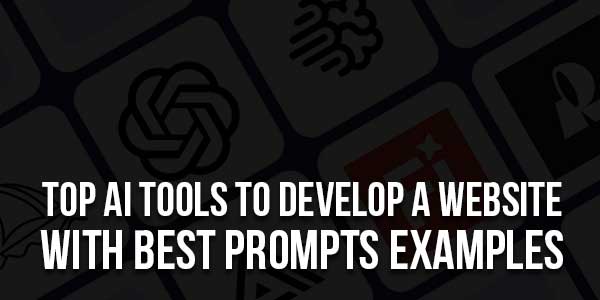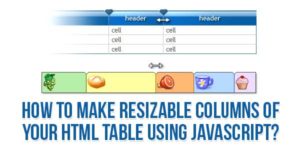
Remember the first time you tried to build a website? I sure do. It was 2012, and I spent three days trying to center a div. Three. Whole. Days.
Fast forward to today, and we’ve got AI tools that can build entire websites in the time it takes to drink your morning coffee. But here’s the catch – most AI-built websites have that distinct “AI look.” You know the one: slightly generic, a bit too perfect, and missing that human touch.
Well, what if I told you we can have the best of both worlds? The speed of AI with the personality and polish of human design?
I’ve been down this rabbit hole for the past year, testing every AI web development tool I could get my hands on. Some were brilliant, others… not so much. But the real game-changer wasn’t the tools themselves – it was learning how to talk to them.
That’s right. The secret sauce is in the prompts. And today, I’m sharing everything I’ve learned about using AI to build websites that don’t scream “I WAS MADE BY A ROBOT.”
Table of Contents
Why Even Bother With AI For Web Development?
I know what some of you might be thinking. “I’m a perfectly competent developer. Why would I need AI?” Or maybe you’re on the other side: “I can barely code – is AI really going to help me build something decent?”
Let me tell you a quick story. Last month, a client needed a complete website redesign in 48 hours. Normally, this would be impossible. But using AI tools with the right prompts, I delivered a fully functional, beautifully designed site in 36 hours. The client loved it, and I didn’t have to pull an all-nighter.
“AI won’t replace developers, but developers who use AI will replace those who don’t. The same way calculators didn’t replace mathematicians – they just made them more efficient.”
Here’s the reality: AI is your new junior developer, design assistant, and content writer all rolled into one. But just like training a new team member, you need to know how to give clear instructions.
The AI Toolbox: What Actually Works in 2024
I’ve tested probably two dozen AI web development tools at this point. Some are overhyped, some are genuinely revolutionary, and others are just… meh. Let me save you the trouble and share the ones that actually deliver on their promises.
ChatGPT-4: The Swiss Army Knife
I know, I know – everyone’s talking about ChatGPT. But most people aren’t using it to its full potential for web development. They’ll ask for “a website about dogs” and get generic, boring code.
The trick is specificity. Lots of it.
Prompt Examples That Actually Work:
See the difference? Instead of “make a bakery website,” we’re giving specific instructions about layout, colors, and even the emotional feel of the design.
Pro tip: When asking for code, always specify the version of JavaScript and ask for comments. It makes debugging so much easier.
Midjourney & DALL-E: For When Stock Photos Just Won’t Cut It
Custom imagery can make or break a website’s design. But professional photography is expensive, and stock photos often look… well, like stock photos.
AI image generators have come a long way, but getting consistent, website-appropriate images requires some prompt finesse.
Prompt Examples That Actually Work:
Notice the specific colors, style description, and aspect ratio? This is how you get images that actually fit your design system.
The key is thinking about how the image will be used. Banner images need different dimensions and composition than profile pictures or product shots.
GitHub Copilot: Your Coding Sidekick
If you’re doing any amount of actual coding, GitHub Copilot is practically essential these days. But are you using it as more than just a fancy autocomplete?
The real power comes when you treat it like a pair programming partner. Comment your intent clearly, and let Copilot do the heavy lifting.
Prompt Examples That Actually Work:
Instead of just typing code and hoping Copilot suggests the next line, try writing detailed comments first:
Or when working with complex functions:
Function to validate the contact form before submission:
– Name field must not be empty and contain only letters
– Email must be in valid format
– Message must be at least 10 characters long
– Show appropriate error messages under each field
– Return true if valid, false if not
*/”
This approach consistently gives me better, more accurate code than just hoping Copilot reads my mind.
Webflow AI & Wix ADI: The No-Code Powerhouses
For those who want to avoid coding altogether, AI-powered website builders have gotten surprisingly good. But the default outputs often need significant tweaking.
Here’s what I’ve learned about getting better starting points from these tools:
Prompt Examples That Actually Work:
With Wix ADI:
The more specific you are about both content and aesthetic preferences, the less time you’ll spend undoing the AI’s generic choices.
Claude & Anthropic: For Your Content Needs
While ChatGPT gets most of the attention, Claude has become my go-to for website content creation. It has a particularly good understanding of tone and brand voice.
Prompt Examples That Actually Work:
For product descriptions:
Claude excels at maintaining consistent voice across multiple pages, which is crucial for professional websites.

The Art of The Prompt: Speaking AI’s Language
After months of experimentation, I’ve discovered that effective prompting for web development follows a specific formula. It’s not about being a tech genius – it’s about being a clear communicator.
The 5 Key Elements of Perfect Web Development Prompts
- Role Assignment: Start by telling the AI what role to play. “Act as an experienced web developer specializing in e-commerce sites…”
- Specificity: Don’t say “modern design” – describe what modern means to you. “Use plenty of white space, minimalist navigation, and subtle animations on scroll.”
- Technical Constraints: Specify frameworks, libraries, browser support, or performance requirements.
- Content Structure: Outline what sections you need and what content goes where.
- Style Guidance: Provide color codes, font preferences, and aesthetic direction.
Let me show you the difference this makes:
Bad Prompt: “Make a restaurant website”
Good Prompt: “Create an HTML and CSS template for an Italian restaurant website. Include: navigation with logo and menu links, hero section with high-quality food image and reservation CTA, menu section with categories (appetizers, mains, desserts), about section telling the family story, and contact section with map. Use a color palette of deep reds, dark greens, and cream colors. Ensure it’s fully responsive and accessible.”
See how the second prompt gives you something actually usable?
Putting It All Together: A Real Workflow Example
Let me walk you through how I actually build sites using these tools. Last week, I built a portfolio site for a photographer friend. Here’s the exact process:
- Planning with ChatGPT: I started by having a conversation about the site structure, target audience, and desired features.
- Design Inspiration with Midjourney: Generated several style options for the hero section and portfolio layout.
- Coding with Copilot: Built the actual site structure with Copilot handling the repetitive code.
- Content with Claude: Wrote the About page, project descriptions, and contact page content.
- Refinement: Used ChatGPT to troubleshoot specific responsive design issues.
The entire process took about 8 hours spread over two days. Without AI tools, it would have taken me at least triple that time.
Common Pitfalls and How to Avoid Them
I’ve made plenty of mistakes along the way so you don’t have to. Here are the big ones:
The “Too Generic” Problem
Early on, I’d get excited when AI spit out a complete website in seconds. Then I’d realize it looked exactly like every other AI-generated site. The fix? Always provide specific design constraints. Give hex codes, mention specific layout patterns, reference sites you like.
The “Inconsistent Code” Issue
AI tools sometimes change coding styles mid-stream. One function uses modern ES6, the next uses older patterns. Solution: Establish coding conventions in your initial prompt and ask the AI to maintain them throughout.
The “Over-Engineering” Trap
AI loves to show off. It might suggest using three different JavaScript frameworks for a simple landing page. Always specify your technology preferences and complexity level – “Use vanilla JavaScript unless a library is absolutely necessary.”
The Future is Already Here
I know some developers worry that AI will make their skills obsolete. But from where I’m sitting, it’s having the opposite effect. I’m taking on more interesting projects because I’m not spending hours on boilerplate code. I’m experimenting with designs I wouldn’t have attempted before because the barrier to entry is lower.
The most successful web developers and designers moving forward will be those who learn to collaborate effectively with AI tools. It’s not about replacing human creativity – it’s about augmenting it.
“The best websites built with AI don’t look like they were built with AI. They look like they were built by talented humans who happened to have incredibly efficient assistants.”
So go ahead – fire up that AI tool and start experimenting. But remember: the magic isn’t in the tool itself. It’s in learning how to ask for what you actually want.
What AI web development tools have you been experimenting with? Have you discovered any prompt techniques that work particularly well? I’d love to hear about your experiences!
Frequently Asked Questions (FAQs)
Can AI really build a complete, professional website from scratch?
AI can build the foundation of a professional website, including code structure, basic design, and content. However, most AI-generated sites still require human refinement for branding consistency, unique functionality, and polishing the user experience. Think of AI as handling 70-80% of the initial work, with humans providing the crucial finishing touches.
What’s the most important skill for using AI in web development?
Prompt engineering is absolutely crucial. The ability to clearly articulate what you want – including specific technical requirements, design preferences, and content structure – makes the difference between getting generic output and getting something truly useful. It’s less about coding expertise and more about communication skills.
Do I need to know how to code to use AI web development tools?
For no-code tools like Wix ADI or Webflow AI, coding knowledge isn’t necessary. However, for more advanced tools that generate actual code, basic understanding of HTML, CSS, and JavaScript will help you customize the output and fix issues. The less coding you know, the more you’ll need to rely on template-based AI solutions.
How do I ensure my AI-built website doesn’t look generic?
Provide very specific design constraints in your prompts – exact color hex codes, font preferences, layout examples from existing sites you admire, and detailed descriptions of the desired aesthetic. Then, always customize the AI output with your own images, refined content, and unique interactive elements that reflect the brand’s personality.
Which AI tool is best for complete beginners?
For absolute beginners, Wix ADI (Artificial Design Intelligence) is the most approachable. It guides you through a conversational process to understand your needs and automatically generates a complete site. As you become more comfortable, you can then explore more advanced tools like ChatGPT for specific components or troubleshooting.
Can AI help with website maintenance and updates?
Absolutely! AI tools can help generate content for blog updates, create new page templates as your site grows, troubleshoot bugs in your code, and even optimize images and performance. Many developers use AI as their first line of defense when something needs fixing or updating.
How does AI handle responsive design for mobile devices?
Most AI web development tools are quite good at generating responsive code by default. However, you should always specify mobile requirements in your prompts – mention breakpoints, mobile-specific layouts, touch-friendly interface elements, and performance considerations for slower mobile networks.
Are there any legal concerns with using AI-generated code?
This is an evolving area. Generally, code generated by AI tools is considered yours to use, but it’s wise to review it for any potential licensing issues, especially if the AI might be reproducing copyrighted patterns. For commercial projects, always have a developer review the code and ensure it doesn’t contain any problematic dependencies or patterns.
Can AI integrate with existing websites and CMS platforms?
Yes, AI tools can generate components, templates, and plugins for popular CMS platforms like WordPress, Shopify, and others. You can use AI to create custom blocks, develop themes, or build specific functionality that integrates with your existing setup. Just be sure to specify the platform and any constraints in your prompts.
How do I stay updated on new AI web development tools?
Follow tech newsletters that focus on web development and AI, join relevant communities on Reddit and Discord, and experiment regularly with new tools. The space is moving incredibly fast, with new solutions emerging monthly. The best approach is to maintain a curious mindset and allocate time for regular experimentation.


















Be the first to write a comment.